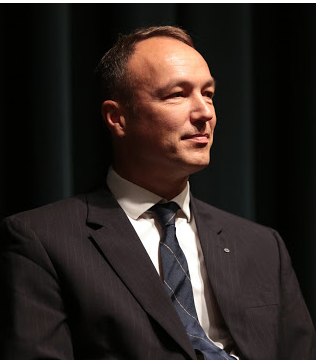Law School Boom and Bust
If everyone could just have a college degree imagine how prosperous America would be? That’s the idea behind free community college tuition and cheap government insured student loan debt. There is no sense stopping at undergraduate, maybe we should all have a law degree?
Josh Mitchell writes in the Wall Street Journal about, “a business network called the InfiLaw System, backed by Chicago private-equity investors. Enrollment soared from several dozen at Florida Coastal in 1996 to roughly 4,000 at the three schools combined in 2012.”
Would-be future barristers paid tuition with a flood of student loan debt. “Federal student loans were central to the venture’s wild growth,” writes Mitchell. “Taxpayers could wind up on the hook for large chunks of InfiLaw student debt that never gets paid back, and the student borrowers face years of damaged credit.”
In a 2011 piece for mises.org, I viewed higher education through an Austrian Business Cycle lens. “College degrees are similar to what the Austrians call higher-order goods. It's thought that a student will gain knowledge and seasoning in college that will make him or her more productive and a candidate for a high-paying career. The investment of time and money in knowledge pays through higher productivity and is translated into higher income. Higher education is the higher-order means to a successful career.”
Meanwhile, education entrepreneurs like Don Lively found student loan rent seeking irresistible. His law schools were the fastest-growing in the country. However, Lively’s bubble popped. Mitchell explains,
Now, two decades after it all started, Mr. Lively’s mission is in tatters. The Charlotte school closed in August after North Carolina revoked its license. Enrollment in Arizona and Florida is down sharply, and InfiLaw is looking for buyers for both schools. Thousands of InfiLaw students have dropped out, transferred or failed state bar exams and are struggling to pay down a total of more than $1 billion in federal student loans, Education Department and American Bar Association data indicate. Many owe more than $100,000.
John Grisham has taken up the law school loan scam in his new book “The Rooster Bar.” His latest bestseller is a joyful romp for us non-lawyers and maybe even a few who practice in the courts.
Foggy Bottom Law School students Mark, Todd and Zola, each six-figures in hock with no job prospects, go rogue in their last year after a friend discovers they’ve all been had by a ruthless tycoon. There’s plenty of twists and turns right up until the end.
Grisham has sneaked in a wonderful character in sharp-tongued prosecutor Hadley Caviness, who knows her way around the courtroom and numerous bedrooms around D.C..
Mr. Lively believed law schools were too discriminating when selecting students using LSAT scores. “Selectivity helped schools achieve higher rankings but limited opportunities for minorities, who tended to score worse on tests than whites for a range of reasons still hotly debated by academics,” writes Mitchell.
Applicants with low LSAT scores were allowed to take an accelerated course followed by an exam to win admission. Andrew McAdams, who taught at the Charlotte school from 2014 to 2015, told the WSJ that all the students scored very poorly and were “grossly unprepared” for law school. “I just can’t in good faith see any of these students getting in,” he recalls. However, he believes five or six were admitted.
With students flooding in, Sterling Partners supplied more capital. “There was ‘surplus demand’ for legal education, he says. About 100,000 people were applying to law schools every year, but only about half were accepted, American Bar Association data show.”
In 2006, adding fuel to the fire, Congress approved a loan program known as Grad Plus, allowing graduate students to borrow unlimited sums to cover tuition and living costs. Prior to Grad Plus, the limit was $18,500 a year.
Law schools used Grad Plus more than any other higher-education sector, according to Education Department data. Mitchell writes, “InfiLaw students eventually piled up more than $700 million in Grad Plus debt, and another $300 million from older loan programs, Education Department data show.”
While the debt piled up, not enough jobs appeared for graduates of InfiLaw graduates. I mentioned InfiLaw’s Charlotte school in a 2015 piece.
The assumption is those high-pay jobs, (A) will require a college degree, and (B) they will be plentiful when the student graduates. Borrowing $100,000 to earn a law degree is a malinvestment if the student ends up writing briefs for $15 per hour. A recent graduate of the Charleston School of Law put fliers on cars announcing that he or she had borrowed $200,000 to attend school and is now working at Walmart for $35,000 a year.
A post on the “Above The Law” blog revealed, “As of the 2013–2014 academic year, the total cost of a three-year J.D. degree from Charlotte Law was $123,792.00, while the median loan debt per graduate was $159,208.00. Just 34 percent of the class of 2014 was employed in full-time, long-term jobs where bar passage was required. ...”
The Charlotte school was closed in August. Fewer than one in five original members of the class of 2016 graduated, passed the bar exam and landed a job that required a law degree.
The law school boom peaked in 2010 and now law school enrollment has fallen to levels last seen in the 1970s.







